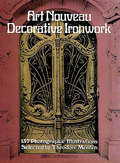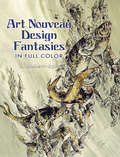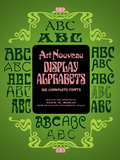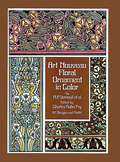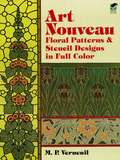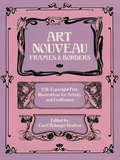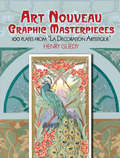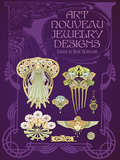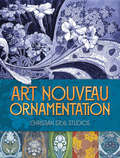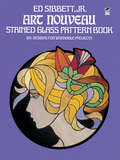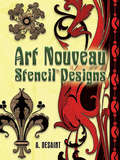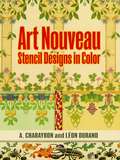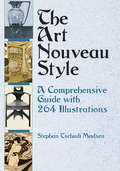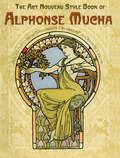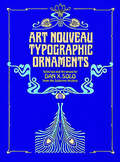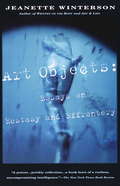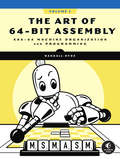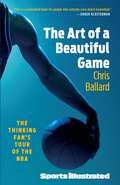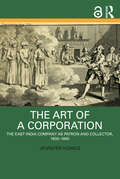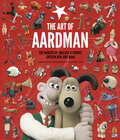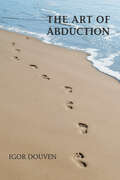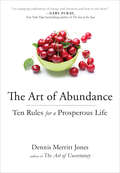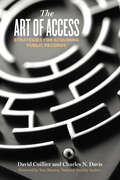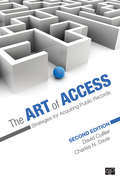- Table View
- List View
Art Nouveau Decorative Ironwork
by Theodore MentenAround the turn of the twentieth century, artists and craftsmen throughout Europe and America were profoundly affected by a new art style that took its inspiration from nature. Generally referred to as Art Nouveau, it exerted its influence on painters, illustrators, architects, ironworkers, furniture designers, interior decorators, potters, jewelry designers -- in fact, nearly every kind of artist-craftsman. While Art Nouveau is a broad and varied style, it is almost uniformly characterized by abstract, asymmetrical, curvilinear design. The thrust of this "new art" was twofold: to elevate the status of the "crafts" to equals and partners of the "fine arts"; and to bring a designed object into a harmonious relationship with its environment through the use of lines -- either expressive or controlling -- that were natural, vital, and most importantly, organic.Among the most imaginative realizations of these pervasive rhythms and serpentine patterns was the ironwork that was created during this period and still exists in major European cities (chiefly Paris and Brussels). Gates, railings, balconies, doorways, staircases, elevator cages, grilles, lampposts, and many other architectural features reveal the sinuous forms, foliate motifs, expert craftsmanship, and rich detail characteristic of the style.No other existing work documents so extensively and accurately the full range of Art Nouveau ironwork. Derived from now unavailable sources, this new anthology attests to the enduring qualities of both the design and its constructive material. Graphic designers, illustrators, architects, artists, and craftspeople of all disciplines will discover numerous ornamental ideas, authentic motifs, and design solutions among the 137 royalty-free photographic illustrations. Collectors and enthusiasts unfamiliar with this particular area of Art Nouveau will delight in the exquisite craftsmanship, ornamental felicities, and juxtaposition of strength and beauty as they observe these unyielding iron creations fashioned into delicate germinating buds and wandering tendrils. Captions for the photographs provide the building, city, architect, and designer of the ironwork. These latter include such notables as Victor Horta, Paul Hankar, Louis Majorelle, Charles Plumet, and Emile Robert. Their work and that of many others is preserved in this fine selection of photographs.
Art Nouveau Design Fantasies in Full Color
by J. Habert-DysElegant and distinctive, these eye-catching motifs combine a refined naturalism with the sophistication of Art Nouveau. Created during the early years of Art Nouveau, they reflect the late nineteenth century interest in Japanese art, as well as the fresh excitement of a blossoming movement that's remained fashionable for well over a century.Sixty-six full-color images feature luxurious patterns and ornaments designed for ceramics, furniture, textiles, walls, and ceilings. Superbly reproduced from a rare folio, these decorations were formerly available only in high-priced antiquarian editions. This inexpensive compilation makes them readily accessible and royalty-free to graphic artists, crafters, and designers.
Art Nouveau Display Alphabets
by Dan X. Solo100 complete fonts from Solo-type Typographers Catalog: upper and lower cases, alternate forms, swash forms, numerals, secondaries. Whiplash, organic, cursive, Orientalized, other styles. Beautiful, wide range of type fluidities suggest elegance, originality, grace, nearness to nature. Most not elsewhere.
Art Nouveau Floral Ornament in Color (Dover Pictorial Archive)
by Francis A. Davis Maurice P. VerneuilClassic portfolio includes 197 original designs, shown on 48 color plates: arrowhead, blackberry, buttercup, columbine, gourd, honeysuckle, iris, thistle, more; plus animal motifs: seahorses, kingfishers, peacocks, others, as well as some rarely associated with ornamental beauty such as rats and lizards. "An attractive and useful reference source." -- Theatre Craft.
Art Nouveau Floral Patterns and Stencil Designs in Full Color (Dover Pictorial Archive)
by M. P. VerneuilMagnificent collection of floral patterns and stencil designs, created by one of the movement's finest artists, includes 120 images of graceful garden flowers --foxglove, hollyhocks, columbine, lilies, among others, and 39 stencil designs of blossoming trees, reeds, mushrooms, oak leaves, peacocks, and more.
Art Nouveau Frames and Borders: 250 Copyright-free Illustrations For Artists And Craftsmen (Dover Pictorial Archive)
by Carol Belanger GraftonIndispensable collection for enhancing menus, invitations, ad copy, greeting cards, catalogs -- almost any graphic project -- includes 199 black-and-white designs, among them crisply rendered floral and foliate motifs, butterflies and peacocks, female figures and sensuous cherubs, asymmetrical shapes and undulating lines, all in a variety of shapes and sizes.
Art Nouveau Graphic Masterpieces: 100 Plates From "La Decoration Artistique" (Calla Editions)
by Henry GuedyPublished in Paris before World War I, these decorative Art Nouveau graphics originally appeared in a now-rare periodical, La Decoration Artistique. This compilation presents 100 full-color plates in a beautiful assortment of period designs that will prove essential to collectors of the era's best and hardest-to-find illustrations. A splendid variety of images includes headpieces, typographical banners, and other designs rendered in the distinctive Art Nouveau style, all embellished with naturalistic motifs, from parrots and peacocks to sinuous vines and flowers in full bloom. Other illustrations feature storefront signage for bakeries and cafés; decorative friezes of theatrical masks and grapevines; borders of blossoms, books, and birds; stenciled decorations for fire screens; and corner and ceiling ornaments. Art aficionados, designers, artists, art students, and anyone with a taste for Art Nouveau will delight in this extraordinary collection, which offers a lasting source of inspiration and pleasure.
Art Nouveau Jewelry Designs
by Rene BeauclairAt the turn of the twentieth century, the Art Nouveau movement swept the world of decorative arts toward an excitingly modern direction. Inspired by both organic and geometric forms, the new trend abandoned historical styles in favor of flowing, natural forms accented by angular contours. Art Nouveau's curves and floral and animal motifs were particularly suited to adaptations in precious stones and rare metals. The elegant, royalty-free illustrations of this collection, reprinted in their original colors from a rare German edition, offer authentic representations of the craftsmanship and imaginative qualities involved in the creation of Art Nouveau jewelry.This sumptuous assortment presents more than 300 pendants, combs, rings, bracelets, brooches, buttons, clasps, and earrings. The exquisitely detailed jewelry and accessories feature lilies, morning glories, and other floral motifs as well as butterflies, seahorses, birds, and a host of fanciful creatures. René Beauclair, a renowned Art Nouveau designer, includes his own works as well as those of André Petitjean, Jules Armbruster, Paul Liénard, Emile Jammes, and Paul F. Follot. The striking, royalty-free illustrations are readily adaptable to any design use and will serve as a source of inspiration for jewelry designers and crafters of all kinds.
Art Nouveau Ornamentation
by Christian StollThis splendid source of authentic Art Nouveau designs presents more than 90 breathtaking plates, ranging from single to full color, selected from rare originals of a renowned German studio's stock portfolios.
Art Nouveau Stained Glass Pattern Book
by Ed Sibbett Jr.Stained glass workers will welcome this book containing 104 authentic Art Nouveau patterns newly rendered by Ed Sibbett, Jr.In the typical Art Nouveau style are 104 designs in this book: florals with stem and leaf patterns; sensuous women with billowing hair, dresses, and exquisite headpieces; fish; butterflies; peacocks; Beardsley-like women in profile wearing masks; and many, many others. Some of these designs are intermediate to advanced and will be a challenge to skilled craftsmen, while others are simple enough for beginners in the field. They can be used whole or in part for windows, panels, lampshades, mirrors, frames, mobiles, or other craft projects.
Art Nouveau Stencil Designs (Dover Pictorial Archive)
by A. DesaintThis unusual collection of stencil designs showcases the sinuous elegance of Art Nouveau, with 44 plates dating from the 1920s. Inspired by interior and exterior architectural ornaments of buildings in France and Britain, the designs are meticulously reproduced from a rare vintage publication.Attractive patterns range from decorations for churches, drawing rooms, nurseries, and everything in between, including halls, galleries, and corners. The elaborate borders, friezes, and festoons include exquisite images of children, animals, birds, rosettes, and heraldic designs. These finely detailed, royalty-free patterns are an invaluable resource, perfect for adding a distinctive note to fabrics, stained glass, wallpaper, and a host of other art and craft projects. Browsers and devotees of the Art Nouveau style will also appreciate this treasury of striking stencil designs.
Art Nouveau Stencil Designs in Color (Dover Pictorial Archive)
by A. Charayron Leon DurandDrawn from a rare French volume, this gallery of delicate multicolor stenciling in the Art Nouveau style features the use of pochoir, a unique method that was popular in Paris during the early part of the twentieth century. Distinctive for its clear, sharp lines, vibrant colors, and textured surfaces, pochoir stenciling was used in fashion journals, interiors, architecture, and industrial design--and offers a host of applications in those areas today. Steeped in the flowing, graceful style of Art Nouveau, this remarkable array of colorful illustrations showcases panels, friezes, walls, and ceilings, embellished with such natural delights as wild roses and nasturtiums, pears and grapes, seagulls and geese, rabbits and roosters, and children playing in country settings. The high-quality, royalty-free art will prove to be an abundant source of inspiration for crafters, decorators, and graphic designers.
The Art Nouveau Style: A Comprehensive Guide with 264 Illustrations
by Stephan Tschudi MadsenA revolutionary reaction to traditional nineteenth-century art, the turn-of-the-century Art Nouveau movement drew much of its inspiration from nature. Applying its sinuous, curvilinear motifs to the decorative arts, graphics, architecture, sculpture, and painting, artists and craftspeople attempted to create a style suitable for a "modern" age. In this absorbing, exceptionally detailed, and well-researched book (one of the first scholarly works to revive interest in the style after World War II), a noted Norwegian authority on the subject examines the movement in depth. Stephan Madsen offers a wealth of facts and insights about the origins and development of the style; trends leading up to Art Nouveau, including the influence of Blake and the Pre-Raphaelites; early Art Nouveau posters and book illustrations; and its use in architectural ornamentation, furniture, jewelry, wrought-iron, glass, and other applied arts. A magnificent selection of 264 photographs and line drawings accompanies the text, which gives broad coverage to the movement, as well as insightful discussions of such important artists as Emile Gallé, Alphonse Mucha, Walter Crane, Charles Rennie Mackintosh, Aubrey Beardsley, Henry Van de Velde, Victor Horta, William Morris, and Eugène Grasset.Artists and students, admirers of Art Nouveau, and anyone interested in this enduring and influential style will welcome Professor Madsen's expert, fully documented study.
The Art Nouveau Style Book of Alphonse Mucha
by Alphonse MuchaTo the general public, Alphonse Maria Mucha (1860-1939) is perhaps best known for his posters of Sarah Bernhardt and magnificent decorative panels such as "The Seasons" -- works that continue to grow in popularity and value as the resurgence of interest in Art Nouveau increases. Among graphic artists and commercial designers, Mucha is praised for the innovative style books that pioneered the use of Art Nouveau in commercial packaging, design, and ornament.The most important of these style books was Documents Décoratifs, published in 1901 at the height of Mucha's fame as the high priest of the Art Nouveau movement. While the artist's fame rests largely on his posters, it is in the smaller works of the style books, or design portfolios, that the refinement of his technique can best be appreciated. The present volume, carefully reproduced from an extremely rare and valuable set of originals, contains all 72 plates of the Documents Décoratifs portfolio. Included are designs for jewelry, wallpaper, stained glass, furniture, and tableware; figure and botanical studies; and a selection of Mucha's famous panneaux décoratifs. Eighteen of the plates are in full color, while the remaining 54 are reproduced in two or more color tones.In addition to numerous innovative designs for practical and decorative objects, the elegant draftsmanship and meticulous execution that characterized all of Mucha's work is evident in studies of langorous nudes, portrait sketches, delicately rendered plant and animal motifs, exquisite modeling of drapery and cloth, and the flowing, fantastic forms created as experiments in pure design. In the Foreword by Gabriel Mourey, specially translated for this edition, Mucha's own philosophy of art, and the relation of the Documents to the rest of his work, receive an appreciative and informative discussion.Hitherto available only in scattered sources, or in the libraries of wealthy collectors, the complete Documents Décoratifs is now available in this inexpensive one-volume edition. Lovers of Mucha's work, admirers of Art Nouveau, and the application of that style to the decorative arts, will want to own this fine royalty-free collection by one of the greatest masters of the technique."[Documents Décoratifs is] . . . an encyclopedic source for Mucha's style in every branch of decorative and applied art and one of the few books on design where even individual plates are sought after by collectors." -- Marina Henderson, The Graphic Style of Alphonse Mucha
Art Nouveau Typographic Ornaments (Dover Pictorial Archive)
by Dan X. SoloOver 800 Art-Nouveau florals, swirls, women, animals, borders, scrolls, wreaths, spots and dingbats, copyright-free.
Art Objects: Essays on Ecstasy and Effrontery
by Jeanette WintersonIn these ten intertwined essays, one of our most provocative young novelists proves that she is just as stylish and outrageous an art critic. For when Jeanette Winterson looks at works as diverse as the Mona Lisa and Virginia Woolf's The Waves, she frees them from layers of preconception and restores their power to exalt and unnerve, shock and transform us."Art Objects is a book to be admired for its effort to speak exorbitantly, urgently and sometimes beautifully about art and about our individual and collective need for serious art."--Los Angeles Times
Art Objects
by Jeanette WintersonIn ten interlocking essays, the acclaimed author of Written on the Body and Art & Lies reveals art as an active force in the world--neither elitist nor remote, available to those who want it and affecting those who don't. Original, personal, and provocative, these essays are not so much a point of view as they are a way of life, revealing "a brilliant and deeply feeling artist at work" (San Francisco Chronicle).From the Hardcover edition.
The Art of 64-Bit Assembly, Volume 1: x86-64 Machine Organization and Programming
by Randall HydeA new assembly language programming book from a well-loved master. Art of 64-bit Assembly Language capitalizes on the long-lived success of Hyde's seminal The Art of Assembly Language.Randall Hyde's The Art of Assembly Language has been the go-to book for learning assembly language for decades. Hyde's latest work, Art of 64-bit Assembly Language is the 64-bit version of this popular text. This book guides you through the maze of assembly language programming by showing how to write assembly code that mimics operations in High-Level Languages. This leverages your HLL knowledge to rapidly understand x86-64 assembly language.This new work uses the Microsoft Macro Assembler (MASM), the most popular x86-64 assembler today. Hyde covers the standard integer set, as well as the x87 FPU, SIMD parallel instructions, SIMD scalar instructions (including high-performance floating-point instructions), and MASM's very powerful macro facilities. You'll learn in detail: how to implement high-level language data and control structures in assembly language; how to write parallel algorithms using the SIMD (single-instruction, multiple-data) instructions on the x86-64; and how to write stand alone assembly programs and assembly code to link with HLL code. You'll also learn how to optimize certain algorithms in assembly to produce faster code.
The Art of a Beautiful Game: The Thinking Fan's Tour of the NBA
by Chris BallardIn The Art of a Beautiful Game, Chris Ballard, the award-winning Sports Illustrated writer who has covered the NBA for the past decade, goes behind the scenes to examine basketball in ways that will surprise even die-hard fans. An inveterate hoops junkie who played some college ball, Ballard sits down with the NBA's most passionate, cerebral players to find out their tricks of the trade and to learn what drives them, taking readers away from the usual sports talk radio fodder and deep into the heart of the game. Ballard talks to Dwight Howard, a prolific shot-blocker, about the enervating feeling of meeting another man at the height of his leap; challenges Steve Kerr to a game of H-O-R-S-E to understand the mentality of a pure shooter; reveals the roots of Kobe Bryant's unmatched killer instinct; and spends time with LeBron James to better understand both his mental game and his seemingly unlimited physical skills. He tracks down renowned dunkers from Dominique to Shaq to explore the impact of the dunk on the modern game, shadows Shane Battier during his preparations to defend LeBron, takes lessons from a freethrow shooting guru who once hit 2,750 in a row, and attends an elite NBA training camp to feel the pain that turns a prospect into a pro. Packed with lively characters and basketball history, and grounded in superb writing and the reportage that is the hallmark of Sports Illustrated, The Art of a Beautiful Game is an often witty, always insightful look at the men like Steve Nash, Yao Ming, and Alonzo Mourning who devote themselves to this elegant and complicated sport. It ultimately provides basketball fans what they all want: an inside read on the game they love.
The Art of a Corporation: The East India Company as Patron and Collector, 1600-1860
by Jennifer HowesThe Art of a Corporation is a comprehensive study of artworks that were commissioned and collected by the East India Company from the early seventeenth to the midnineteenth centuries. These items range from oil paintings on canvas and marble statuary, to sandstone Buddhas and metal figurines of Hindu deities. The book takes a chronological approach and focuses on provenance to show that objects are valuable primary resources for understanding the East India Company’s history. The artworks illustrate how one of the longest-surviving multinational corporations in the Western world changed over its three-century history and provide a powerful visual account of its perpetually reinvented image. This book is a must read for scholars and researchers of art history, colonial art, colonial studies, British history, economic history, business history, South Asian history, post-colonial studies, and cultural studies. Chapter 1 of this book is freely available as a downloadable Open Access PDF at http://www.taylorfrancis.com under a Creative Commons Attribution-NonCommercial-NoDerivatives 4.0 International license.
The Art of Aardman: The Makers of Wallace & Gromit, Chicken Run, and More
by Aardman Animations Ltd.See the iconic, energetic art of Aardman Animations like never before! The Art of Aardman takes readers on an unforgettable, behind-the-scenes journey through the studio's archives. This collection features original character sketches and never-before-seen concept art, offering a unique look inside the studio that created Chicken Run, Morph, and, of course, Wallace & Gromit. Kicking things off with forewords from founders Peter Lord and David Sproxton, this celebration of all-things Aardman is a must-have for all animation fans.
The Art of Abduction
by Igor DouvenA novel defense of abduction, one of the main forms of nondeductive reasoning.With this book, Igor Douven offers the first comprehensive defense of abduction, a form of nondeductive reasoning. Abductive reasoning, which is guided by explanatory considerations, has been under normative pressure since the advent of Bayesian approaches to rationality. Douven argues that, although it deviates from Bayesian tenets, abduction is nonetheless rational. Drawing on scientific results, in particular those from reasoning research, and using computer simulations, Douven addresses the main critiques of abduction. He shows that versions of abduction can perform better than the currently popular Bayesian approaches—and can even do the sort of heavy lifting that philosophers have hoped it would do. Douven examines abduction in detail, comparing it to other modes of inference, explaining its historical roots, discussing various definitions of abduction given in the philosophical literature, and addressing the problem of underdetermination. He looks at reasoning research that investigates how judgments of explanation quality affect people&’s beliefs and especially their changes of belief. He considers the two main objections to abduction, the dynamic Dutch book argument, and the inaccuracy-minimization argument, and then gives abduction a positive grounding, using agent-based models to show the superiority of abduction in some contexts. Finally, he puts abduction to work in a well-known underdetermination argument, the argument for skepticism regarding the external world.
The Art of Abundance: Ten Rules for a Prosperous Life
by Dennis Merritt JonesA life of wholeness and purpose are well within our reach--The Art of Abundance outlines ten rules, or practices, that lay the foundation for a life worth living.Whether we're striving for a new job, a higher salary, or a stronger relationship, Dennis Merritt Jones explains in The Art of Abundance that we all essentially want the same things: freedom, inner peace, and a life filled with purpose and meaning. He shows that a life of wholeness and peaceful satisfaction is readily available to us--we just need the eyes to see it and the faith to claim it. The problem is that most people don't know where to look for such a life. This book will help readers open their eyes to the limitless abundance that lies waiting just beyond their current belief system. In The Art of Abundance, Jones identifies ten rules, or practices that, when followed faithfully, lay the foundation for a life worth living. In order to make each rule as easy to apply as possible, Jones lays out the premise, the problem, the principle, the practice, and the payoff of each. These practices assist readers in creating a greater flow of goodness into their lives--in ways they may have never considered.
The Art of Access: Strategies for Acquiring Public Records
by Charles Davis David L. CuillierWhatever you're trying to learn about the world—as a journalist or as an informed citizen— public records often hold the key. But what records, where? And how to get them? It starts with understanding the Freedom of Information Act, but what you really need are strategies for dealing with the officials who stand between you and the information you seek. Gaining access to records is an art, one that requires an organized approach and a good understanding of human behavior.
The Art of Access: Strategies for Acquiring Public Records
by Charles N. Davis David L. CuillierWhatever you’re trying to learn about the world—as a journalist or as an informed citizen— public records often hold the key. But what records, where? And how to get them? Gaining access to records is an art, one that requires an organized approach and a good understanding of human behavior. The Art of Access: Strategies for Acquiring Public Records, Second Edition is a how-to guide for putting the law into action and using ingenuity to pry records loose. FOI experts and longtime journalists David Cuillier and Charles N. Davis present strategies for dealing with the officials who stand between you and the information you seek. They explore new developments in technology and research and the latest online innovations and tools to help you rethink the information-gathering process and develop a document state of mind.
